Estimated reading time 11 minutes, 30 seconds.
This week marks the 40th anniversary of the maiden flight of the remarkable Lockheed F-117 Nighthawk stealth fighter, the U.S. Air Force’s famous “black jet” which is virtually invisible to radar. Preceded by a pair of sub-scale demonstrator aircraft known as Have Blue, the first of five development YF-117As (serial 79-10780) took to the air for the first time on June 18, 1981, in the skilled hands of Lockheed test pilot Hal Farley. A product of the famous Lockheed Skunk Works, the program was a top secret “black” project, but remarkably the initial flights were carried out from the clandestine test facility at Groom Lake, Nevada, in broad daylight.
Lockheed built 59 production aircraft in addition to the first five development jets at its Burbank facility, which were airlifted to Groom Lake to be assembled and flown, with the first operational F-117 accepted by the USAF on Aug. 23, 1982. While testing continued at Groom Lake, the 4450th Tactical Group was quietly established at the re-developed Tonopah Test Range (TTR) airfield as the super-secret operator of the USAF’s new stealth fighters. The unit also operated A-7D Corsair IIs, which neatly acted as cover for the real role of the unit, which was to introduce the Nighthawk into service.

Operation Just Cause — the U.S. invasion of Panama — served as the operational debut of the F-117 in December 1989, when Nighthawks were called upon for their bombing accuracy when they attacked targets linked to Panama’s General Manuel Noriega. However, it was Operation Desert Storm that was to truly stamp the F-117’s mark in aerial combat, as it took a lead role in one of the most important chapters in the history of military aviation.
The USAF publicly unveiled the F-117 at Nellis Air Force Base, Nevada, in April 1990, soon after the 4450th Tactical Group had become the 37th Tactical Fighter Wing and opened up daylight operations for its three squadrons of Nighthawks. (The F-117 pilots had previously been heavily restricted to flying nocturnally in order to keep the Nighthawks away from prying eyes.) Shortly after, in August 1990, Iraq invaded Kuwait, which sparked one of the largest military mobilizations ever. Some 18 F-117s from Tonopah’s 415th Tactical Fighter Squadron were hurriedly deployed to Khamis Mushait in Saudi Arabia, followed by a second squadron in December. Then in the early hours of Jan. 17, 1991, F-117s were sent to downtown Baghdad as part of the first wave of strikes of Operation Desert Storm, unleashing laser-guided bombs on Saddam Hussein’s regime with lethal accuracy.
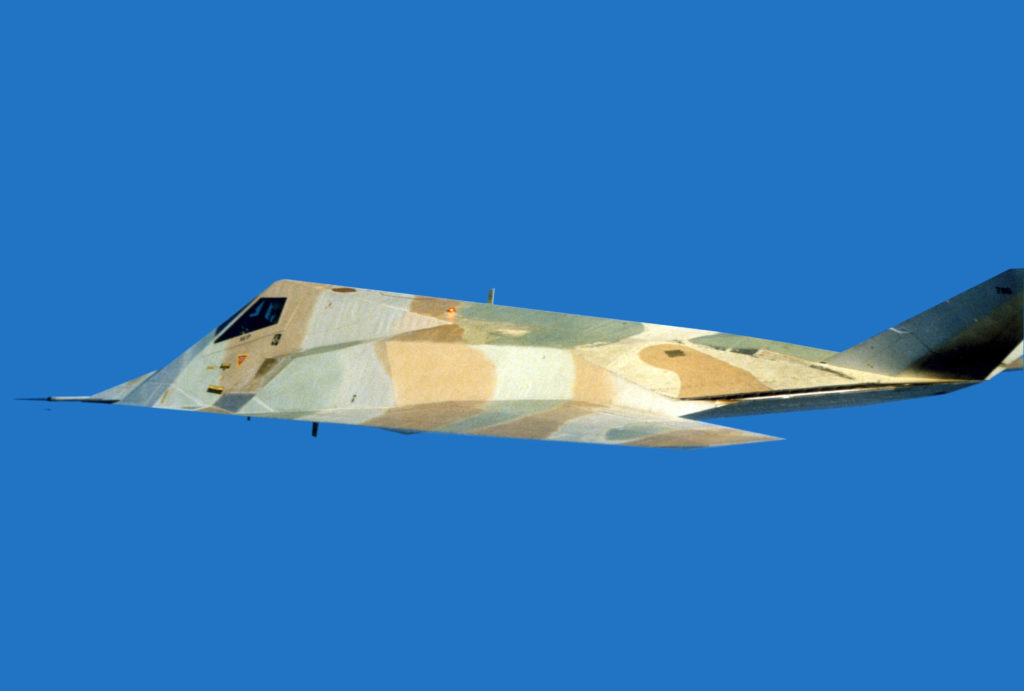
The F-117s provided an incredible level of support to allied operations throughout the campaign, striking a range of targets, and providing critical capabilities, such as the ability to employ the GBU-27 “bunker-buster” bomb. The deployed Nighthawks accumulated some 1,271 combat sorties with an incredible mission capable rate of over 85 percent. 37th Tactical Fighter Wing commander, Col Alton Whitley, led his F-117 team back to Nellis AFB on April 1, 1991, to a hero’s welcome.
As a further move to bring the F-117 into mainstream USAF operations, it was decided to move the fleet from the still secretive Tonopah to Holloman AFB in New Mexico, with the relocation completed during 1992. A trickle of small upgrade programs followed to help keep the F-117s relevant, but by the time the aircraft went back into combat during Operation Allied Force in 1999, it was a force that had been somewhat neglected in terms of funding in comparison with the emerging F-22 Raptor.
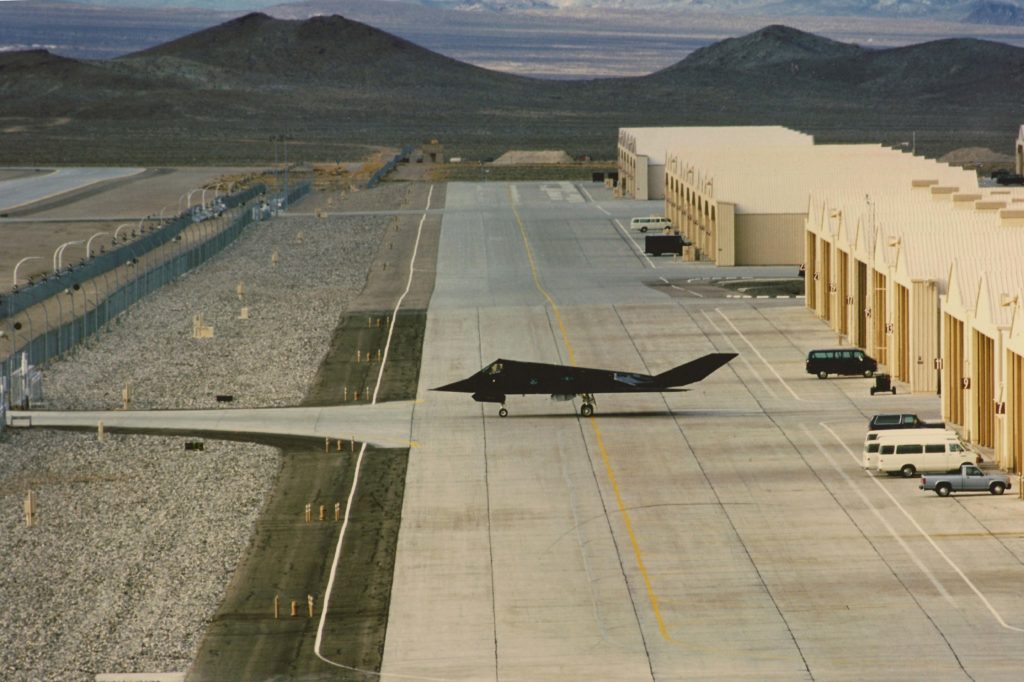
It was during Allied Force that the USAF suffered its sole combat loss of an F-117 using the radio callsign “Vega 31” when LCol “Dale” Zelko was shot down over Serbia by a S-125 Neva/Pechora Surface-to-Air Missile. The wreckage of Zelko’s F-117 was captured by Serbian troops, while the pilot himself was plucked to safety after a tense cat-and-mouse chase between the Serbian ground forces and the U.S. combat search-and-rescue teams. The F-117’s combat swansong was in 2003 during Operation Iraqi Freedom. Again the Nighthawks went to downtown Baghdad on the opening night of March 20, this time operating from Qatar. The F-117s flew nearly a month of combat operations before returning to Holloman.
It was after this conflict that included new cockpit upgrades and the addition of GPS-guided Joint Direct Attack Munitions. A plan to add further weaponry including the Small Diameter Bomb was abandoned as the F-117 was slated for retirement, with the USAF insisting that the F-22 could effectively replace the Nighthawk in service — despite the Raptor’s lack of laser-guided weapons and ability to self-designate ground targets.
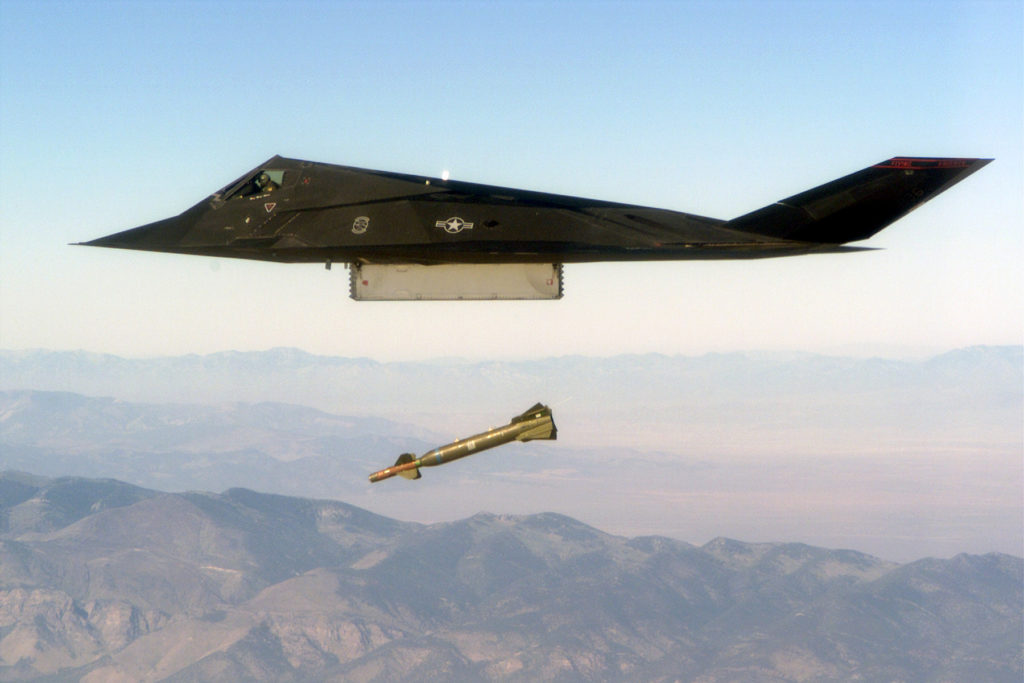
When the F-117s were officially retired in 2008, 52 aircraft were placed into storage. A final farewell was made on April 22 when the last four flyable jets made a stop at the Lockheed Martin “Skunk Works” at the Air Force’s Plant 42 in Palmdale, California, as they made their way from Holloman to their original home at Tonopah for storage.
The F-117s are officially being kept in Type 1000 flyable storage in accordance with a government agreement that called for the aircraft to be maintained in a form that would enable them to be recalled to active service in times of crisis.
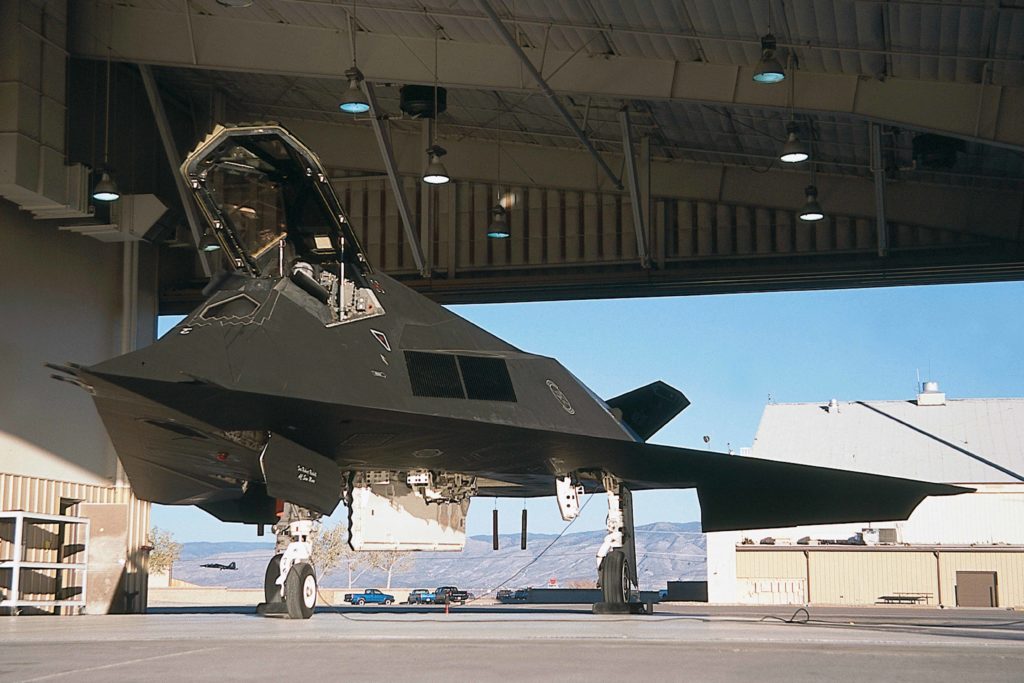
A video recorded near the Nevada Test and Training Range (NTTR) in July 2010 revealed an F-117 flying near Tonopah, and subsequent imagery from outside Tonopah confirmed the type’s continued operations here, but without any formal acknowledgement from the USAF. Then on Feb. 26 to 27, 2018, two different Nighthawks were photographed operating at low level in the R-2508 range complex near Death Valley in southern California in broad daylight. While the aircraft were devoid of markings, one carried a fin band with the wording “Dark Knights.”
Continued sightings indicate that a handful of F-117s are still operating from the very same hangars they flew from in total secrecy in the 1980s, possibly as a unit known as the “Dark Knights.” Sightings suggest they are flying missions in support of flight-testing and training in the areas of southern Nevada and California. They have even flown over downtown Los Angeles with supporting tanker aircraft en route to and from the ranges off Southern California, apparently supporting U.S. Navy Carrier Strike Group pre-deployment workups. In October 2020, F-117s were clearly photographed as two aircraft stopped-off at Marine Corps Air Station Miramar, and one jet visiting Nellis AFB. Significantly, the jets were sporting TR tailcodes as per their original stint at Tonopah.
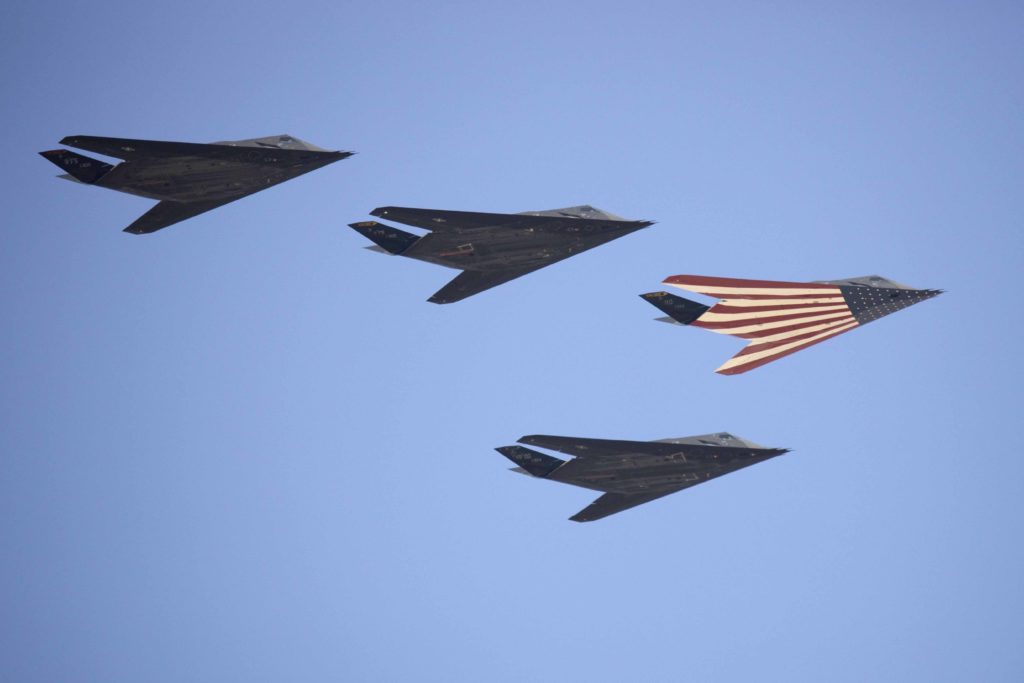
It’s clear that the USAF has released some jets from its storage program to be decommissioned. A number of aircraft have been transported by road from Tonopah, having been donated to various air museums. Meanwhile, the USAF will only say that pilots from the Air Force Test Center still fly them for limited research activities. There is no formal acknowledgement regarding their continued operations and actual role.
A tantalizing Facebook post earlier this year said that plans were afoot for an F-117 flypast over Palmdale to mark the 40th anniversary of the maiden flight. Sadly, that plan appears to have been dropped. Yet 40 years from that first flight, a very special band of aviators and experienced maintainers will raise a glass as they toast a remarkable landmark. Some may even get the wheels in the wheelwells for a landmark flight for what was originally dubbed the “Wobblin’ Goblin,” which still flies on today.








